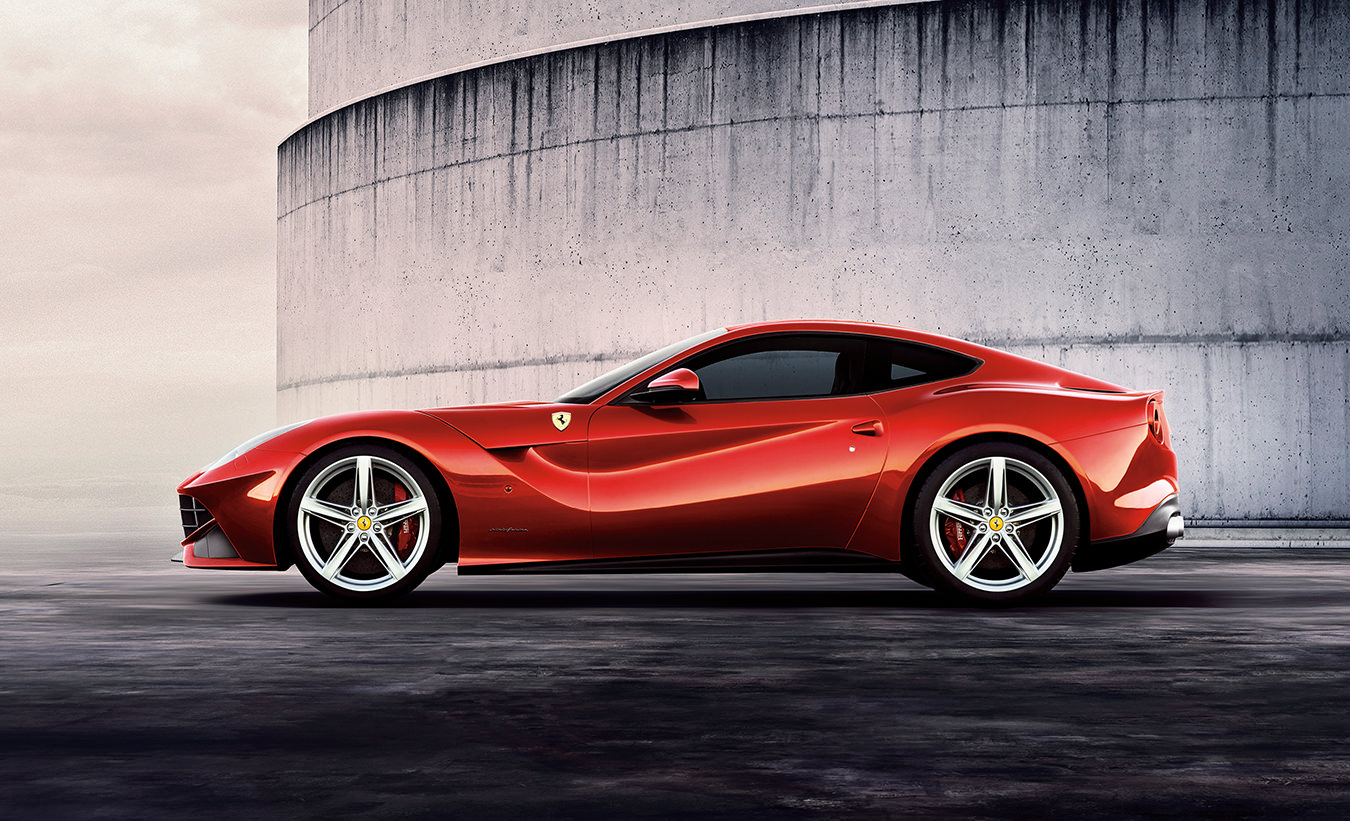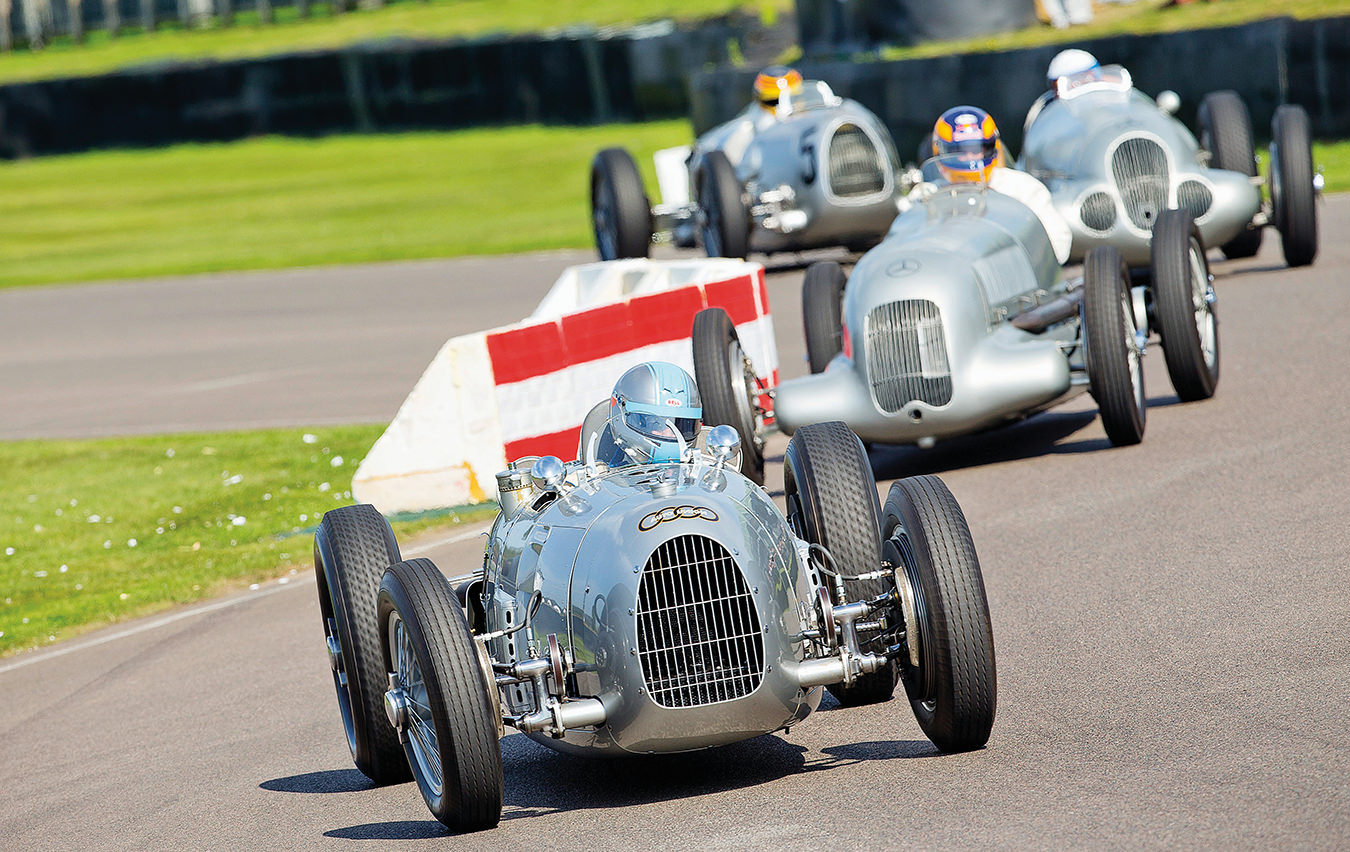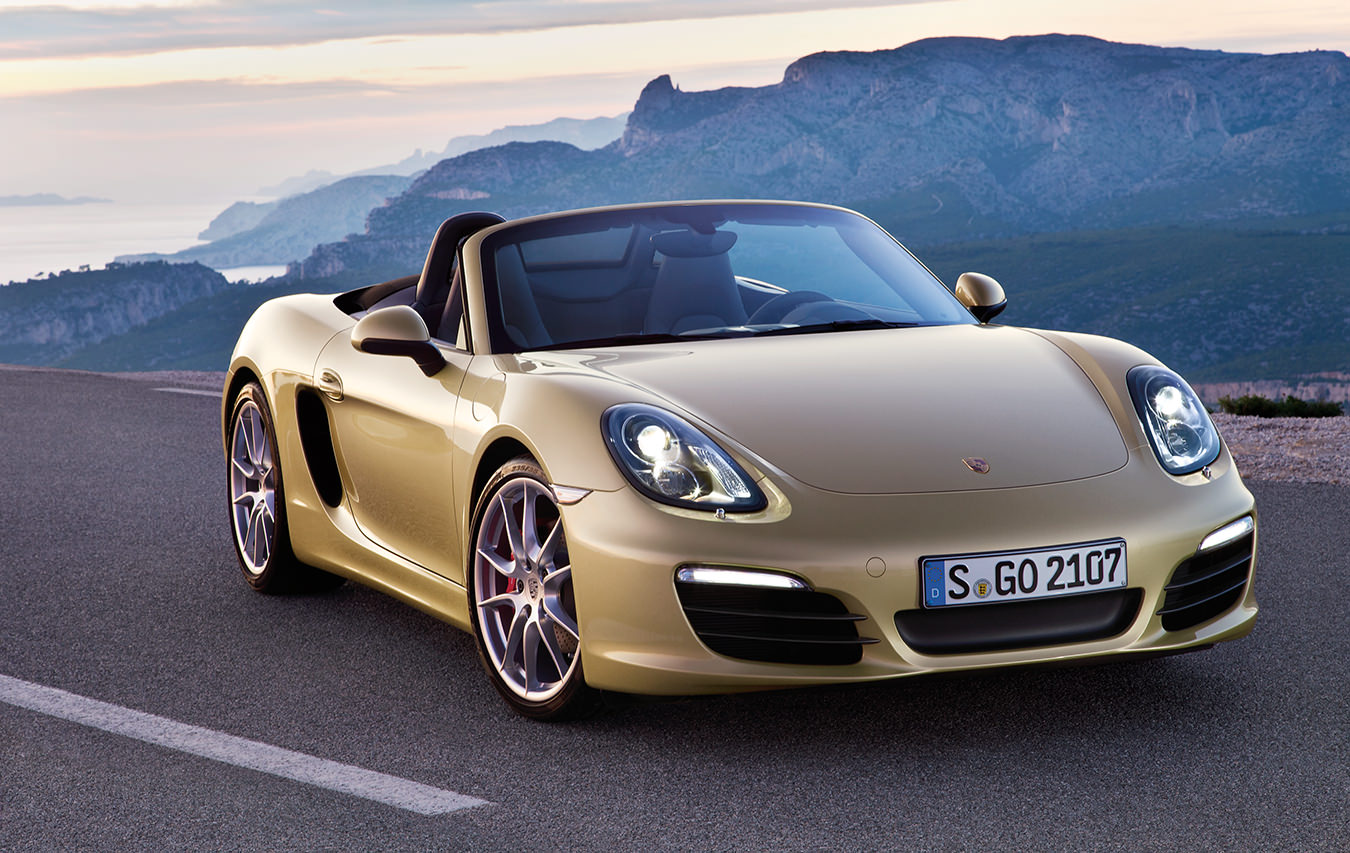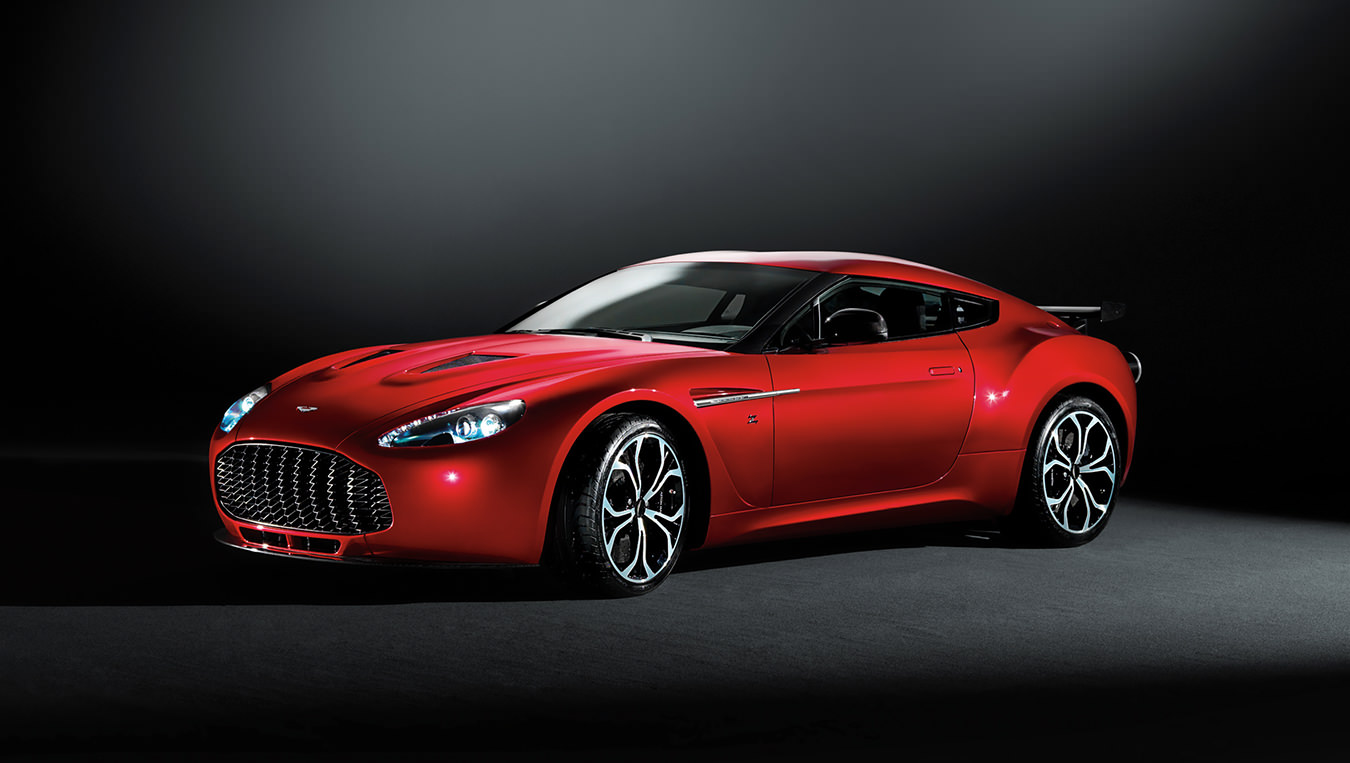The Rolls-Royce Phantom
A distinguished reputation.
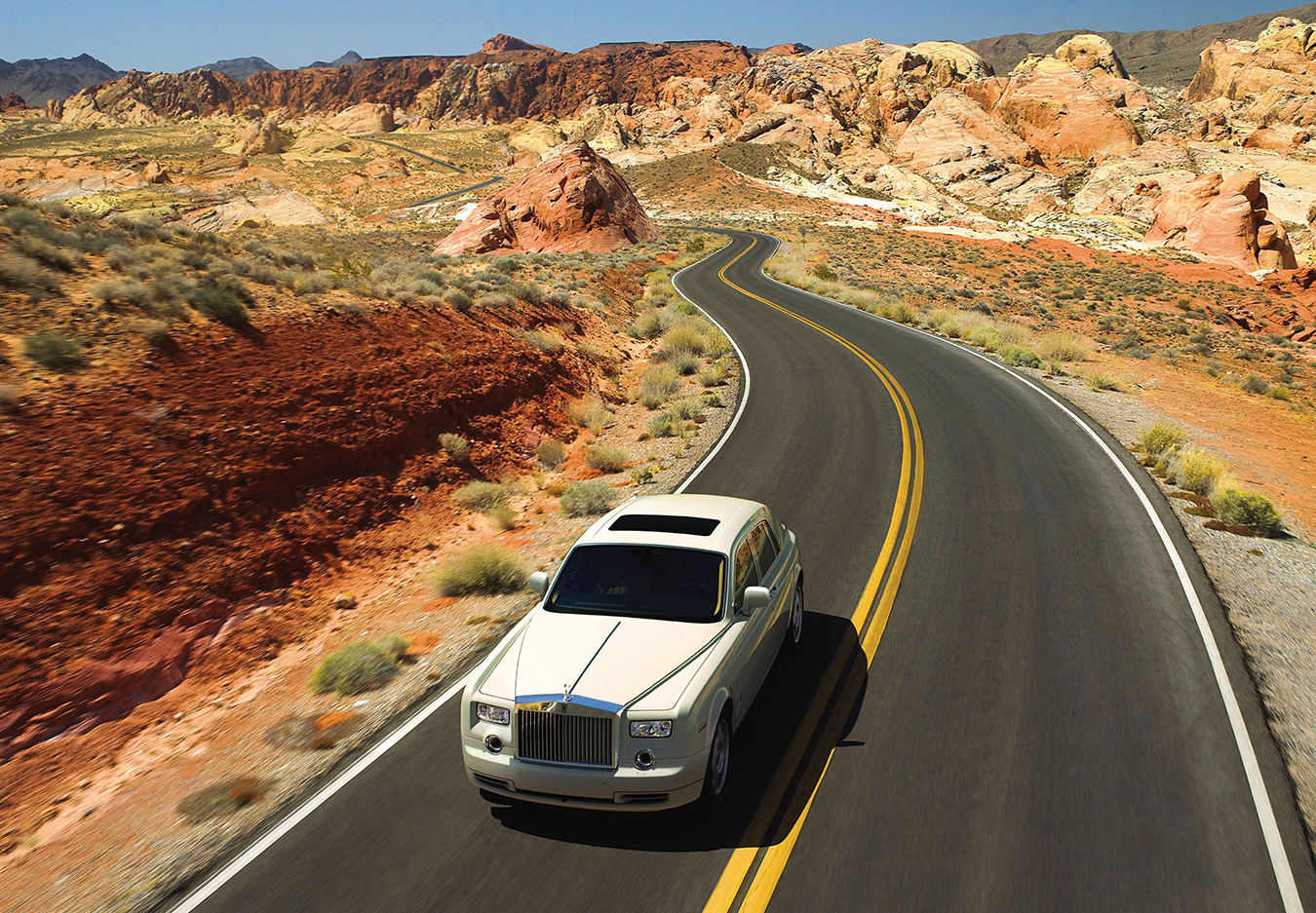
The Honourable Charles Rolls and Sir Henry Royce were an unlikely pair to found their iconic nameplate back in 1904, but great partnerships have often been based on odd collaborations. Rolls was a youthful and wealthy aristocrat with marketing flair, while Royce was a down-to-earth engineer with a head for business. Always attracted by speed, Rolls raced bicycles as a schoolboy, followed by motorcycles and automobiles—a common-enough progression at the time. Almost inevitably, he was drawn to the developing field of aeronautics, a risky and adventurous business back in the early part of the 20th century. Sadly, this was to be his undoing; he died in 1910 following a structural failure in his Wright biplane during a flying exhibition. (He was, in fact, the first person in Britain to die in an airplane crash.)
After the accident, Sir Henry Royce forged ahead to lay the foundations of Rolls-Royce, which has for generations been one of the world’s top luxury brands. Even competitors in the high-end luxury market (and there are very few) would argue that no automobile manufacturer has quite achieved the mystique of Rolls-Royce, though many have tried over the decades.
The Phantom, built at a factory near Goodwood in the south of England, was never a shrinking violet in the world of fine cars, and so it goes today. The current model is not a car that’s easy to miss when you see one out on the road. And as any world traveller will confirm, to spot the 10-car fleet (all white) operated by the Burj Al Arab hotel in Dubai or the 14 Phantoms on hand at the Peninsula Hotel in Hong Kong is to witness an automotive sight like no other.
The car is big and brash; it is definitely not a vehicle for someone wanting to keep a low profile. There are three basic Phantoms: the majestic sedan, which is offered in two wheelbases; the elegant coupe; and a magnificent convertible—officially a drophead coupe—which provides the most opulent wind-in-your-face driving experience. All the models use 6.75-litre V-12 engines designed and assembled by parent company BMW in Germany. Also from Germany is the six-speed automatic transmission, which is manufactured by the highly regarded ZF Group, supplier of gearboxes to a wide range of prestige automakers.
The sheer grace with which the Phantom rides and manoeuvres is a reminder of days gone by when aspiring chauffeurs had to practise starts, stops, and turns with a full glass of champagne sitting on top of the dash.
For many decades, and with a rather wonderful air of eccentricity, Rolls-Royce refused to reveal the horsepower levels of its cars, famously telling buyers that the power levels were “adequate”. In today’s world, where automakers battle ceaselessly for bragging rights, Rolls-Royce is happy to confirm that the aluminum Phantom boasts 453 horsepower and high levels of silky-smooth torque to match. As always, these cars offer an uncanny level of refinement and luxury and very much retain the lofty standards set all those years ago by Hon. Rolls and Sir Royce.
It would be all too easy to believe, looking at the size of this car, that it offers supreme refinement without impressive performance, but nothing could be further from the truth. The refinement is certainly there and at levels very few automakers get close to, but the heavy Phantom will top 100 kilometres an hour in less than six seconds (5.8 for the coupe, 5.9 for the sedan), and the top speed would be higher than the claimed 250 kilometres an hour if the car wasn’t electronically restrained when it reaches that lofty pace.
Handling, too, is far better than a driver might expect, though the Phantom has a turning circle like a Cunard ocean liner. It’s not a car that tempts the driver to press it hard on a winding road, but if agility is demanded, it is once again surprising, powering through tight bends like a far smaller automobile and with decent stability, too. This isn’t the kind of driving the Phantom is built for, though. The sheer grace with which it rides and manoeuvres is a reminder of days gone by when aspiring chauffeurs (Rolls once operated the Rolls-Royce School of Instruction for them) had to practise starts, stops, and turns with a full glass of champagne sitting on top of the dash.
Four-door Phantoms have backseat access via doors that are hinged at the rear; unkindly dubbed “suicide doors” in North America, they are more politely called “coach doors” by Rolls-Royce. They actually work very well indeed when climbing into the Phantom’s commodious rear compartment. The coupe and its drophead stablemate also use coach doors. Incidentally, the mirror-like paint finish of these cars for which the company has long been famous can be specified in 16 different hues, but for the truly hard to please, Rolls has a palette of some 44,000 colours available.
The interior of the Phantom is an absolute delight and exceeds even the expectations of buyers well used to the ambiance and comfort of luxury cars. If cabinet-making maestros Chippendale and Sheraton were alive today and crafting vehicle interiors rather than elegant furniture, this is the kind of work they’d be involved in. Most of the woodwork in upscale automobiles these days is decorative, but there was a time in the early years of motoring when body structures were routinely made of wood and covered with pressed steel panels. Wood that remained exposed was sanded, stained, and polished and today, the time-honoured skills associated with coach building live on in the form of these wondrous Rolls-Royce interiors.
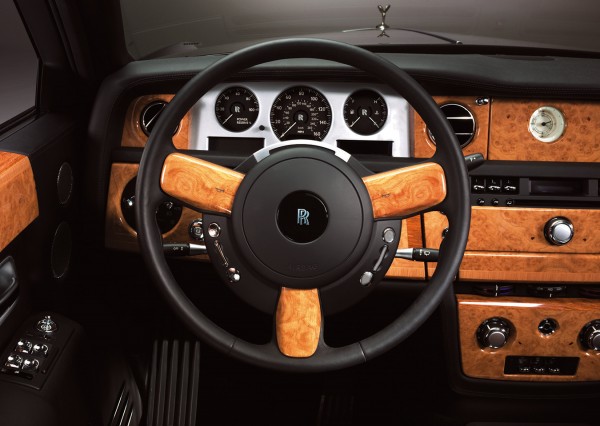
The veneers used by Rolls-Royce to create the interior trim come from many parts of the world and can be extremely expensive. Walnut burr is a rare type of growth found on the walnut tree, and a popular choice for Rolls owners. Veneers are stored at Rolls-Royce for years in a climate-controlled room and carefully numbered so that if a car interior is ever damaged, wood for a repair can be found from the same tree and the same cut, ensuring a perfect match. No two cars are ever quite the same inside.
Similar care goes into the fine leathers used by Rolls-Royce, and customers can specify just about any colour or texture that takes their fancy. It takes 15 to 18 hides to upholster a Phantom, and each is painstakingly inspected before being judged flawless and ready for the cutting and hand-stitching processes. The men and women involved in the interior trim department at Rolls-Royce are possibly the most skilled at this superlative level of work—and it shows in every detail of the Phantom’s resplendent cabin.
The car is ultimately a sophisticated piece of engineering, with every feature a vehicle in this class can incorporate. Safety devices include a full suite of airbags and a wide range of electronic stability and braking aids. Of course, if you need even more protection than what’s offered by the standard Phantom, Rolls-Royce will be happy to sell you an armoured version. The car packs a number of high-tech weapon-proofing systems for buyers who need an elevated level of personal protection.
But even though it’s incorporated such state-of-the-art additions, there’s still a sense of tradition surrounding the car. Rounding off almost every Rolls-Royce since 1911 is the stately Acropolis-inspired radiator grille with its Spirit of Ecstasy sculptured figure flying gracefully atop it in all her glory. Radiator mascots were very much in vogue during the early decades of motoring and even legendary glass artist René Lalique produced them in fair numbers. Nowadays, the flying lady retracts into the grill electronically when the vehicle is parked as a theft deterrent.
Like no other feature of the Phantom, it’s the temple-like grille and its flying lady that make it absolutely clear that this is no ordinary car—this is a Rolls-Royce.
Photos ©Rolls-Royce Motor Cars Ltd.

